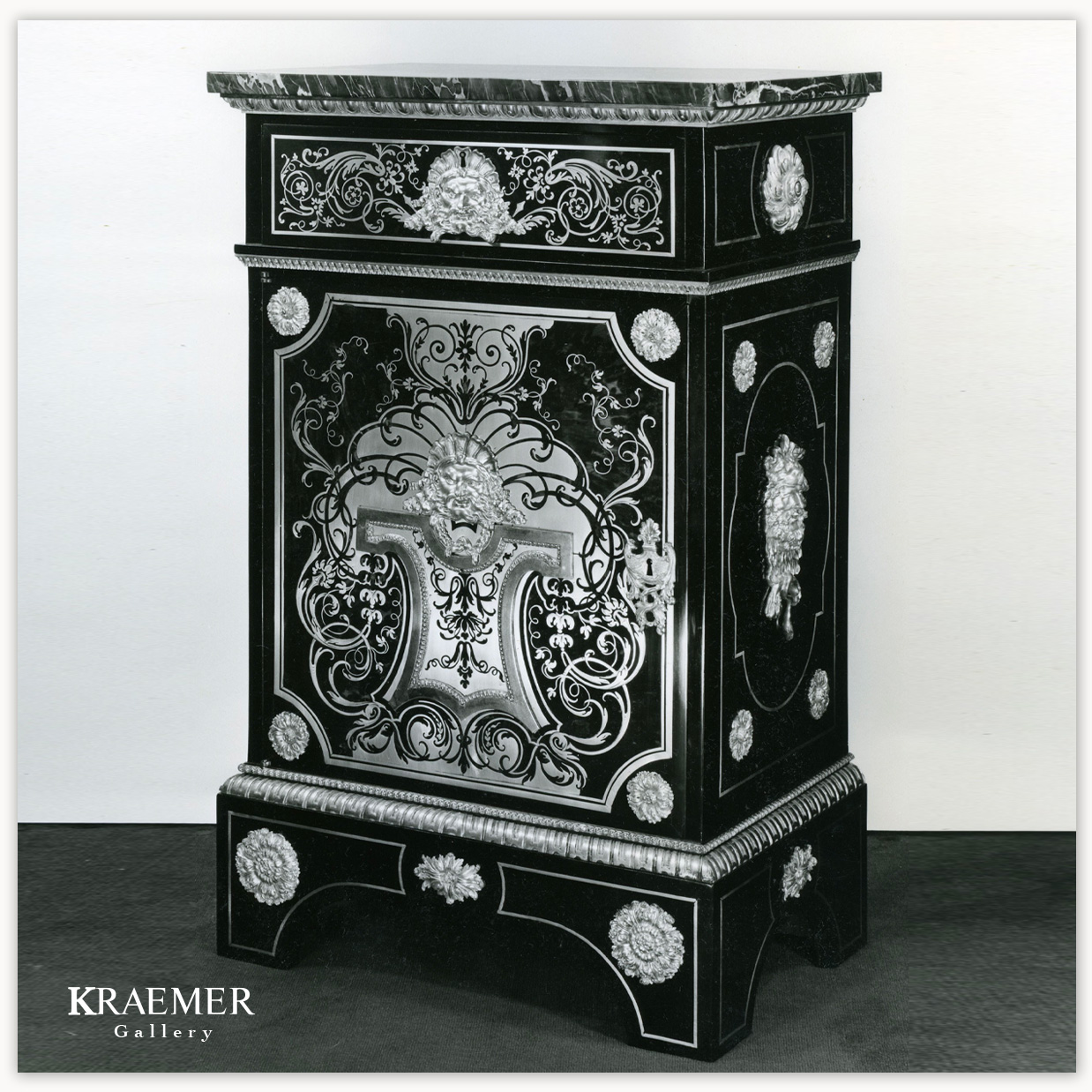IN THE MUSEUMS
Two low cabinets – Louis XVI
These low cabinets were made in Boulle marquetry (tortoiseshell, brass and ebony veneering).
They both feature a drawer and a hinged leaf, which are adorned with chiselled, gilded bronze ornaments.
Donated Grog-Carven.,
Musée du Louvre, Paris.
These elbow-high cabinets are just about tall enough to lean against. They were made during the Louis XVI era, yet they feature elements that are typical of the Louis XIV era, such as Boulle marquetry ornaments. In the middle of the 18th century, these Louis XVI furniture pieces lost some of their value. They then became popular again amongst collectors at the end of the century, such as the Julliots, a family of marchand-merciers. One of them, Lazare Duvaux, took the opportunity to sell these pieces to prestigious clients such as Madame de Pompadour, the Marquis de Marigny or François Boucher.
A new kind of furniture became fashionable. These low cabinets, which are on display in the Louvre Museum, are a prime example of 18th century craftsmanship. Low cabinets took the place of impressive Louis XIV furniture; they were used to showcase vases and other works of art. The high demand for these works of art encouraged cabinetmakers to try something new. They changed the base of furniture pieces and added marble tops to create elbow-high cabinets. In the 1770s, pieces such as these became quite popular: some cabinetmakers, such as Levasseur, Montigny and Joseph Baumhauer, created replicas of Boulle pieces.


